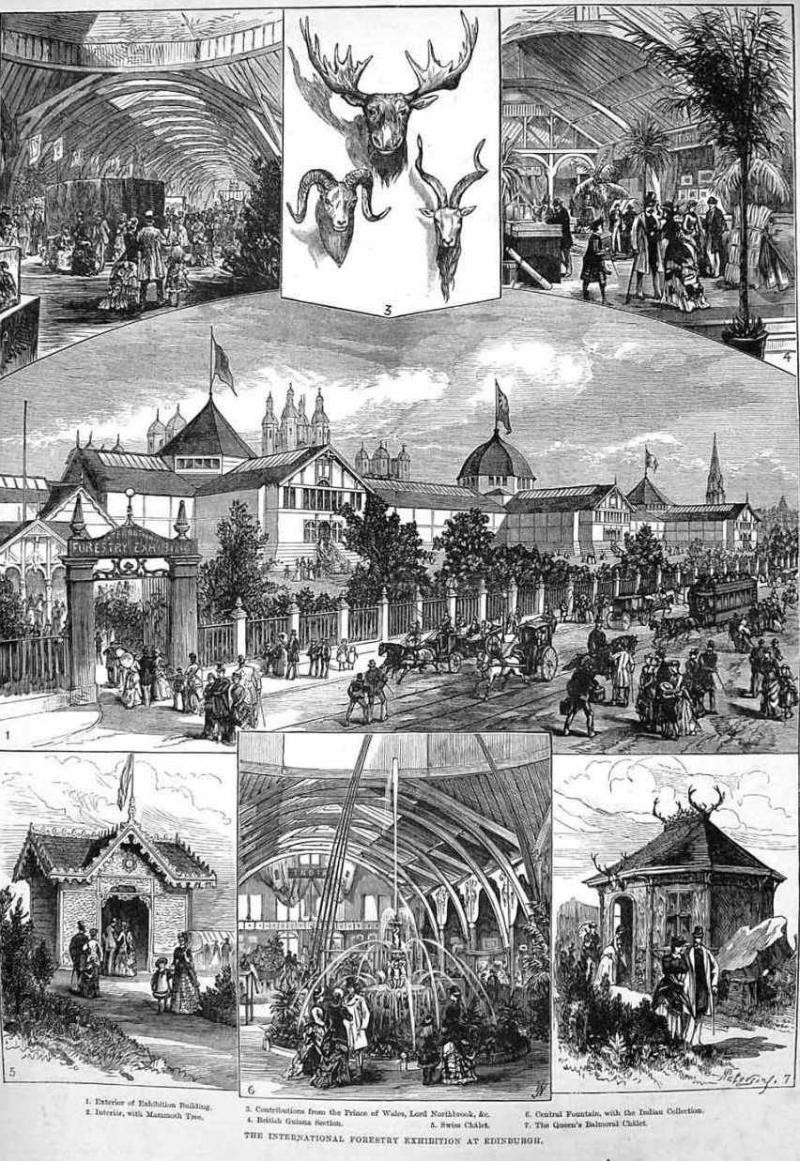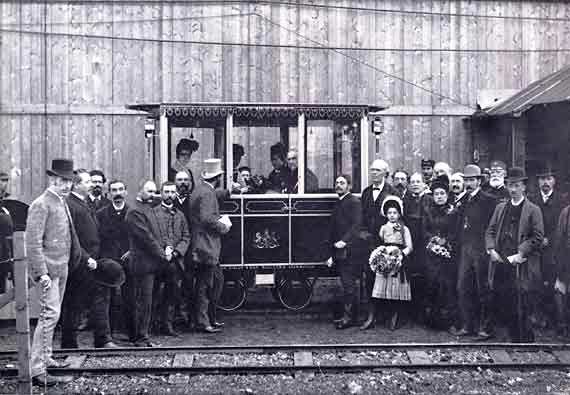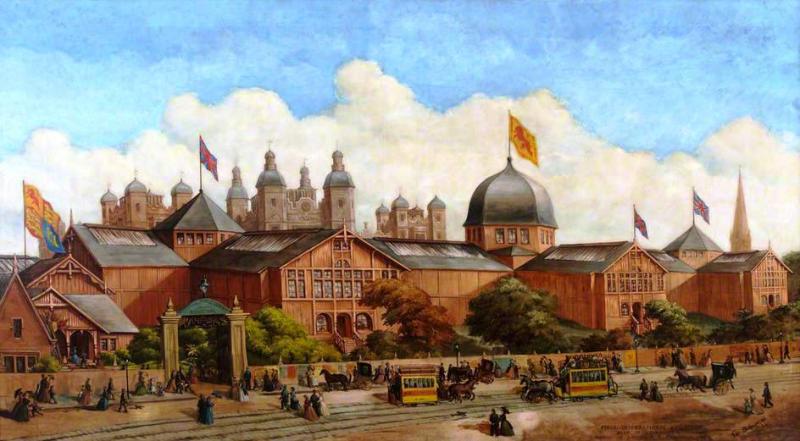Edinburgh was chosen as the site for the first International Forestry Exhibition in 1884.
The Scottish Arboriculture Society and planned the exhibition on 7 to 8 acres of land on which was erected a handsome wooden building in the park, designed by architect William H Playfair.
The opening of the Exhibition was performed by the Marquis of Lothian on 1st July 1884 at around one o’clock. There were over 50 and colonial and foreign countries from China to Peru, rare and beautiful trees and shrubs from around the world, displays of wood working machinery, and 500 private exhibitors.

“Everything connected with forestry is especially attractive just now when so much attention is being drawn to the subject in its very varied aspects by the Exhibition at Edinburgh.” Nature 30, 309-310 (31 July 1884)

“This morning as we go to press, there is being conducted on the lines of the Edinburgh Street Tramway Company opposite the Forestry Exhibition, an interesting experiment with the view of testing application of electricity as a motive power in the working of ordinary street tramway traffic.” Scotsman Newspaper on 11th October 1884
The growth of the railways was a major threat to forests. A mile of rail line needed 1760 wooden sleepers which would have a life of eight years. In addition to the sleepers, wood was needed to run the steam engines of the railways. There was no way to maintain the supply of wood without destroying the forests unless some special management was undertaken.
Arboriculture in 1850s included the raising and establishment of young trees in open ground by the gardener or estate forester, many estates creating an arboretum to observe the performance of these new species. More familiar species were planted for the improvement of estates as landscape groups, or as shelter belts for stock, or as plantations for timber.
Early records of the Scottish Arboricultural Society, show that in 1868-1872, members were concerned about ‘The effects of forests on climate’ and approached the British Council for the Advancement of Science to discuss a project on this topic.
Queen Victoria became Patron of the Society in 1869 and granted a Royal Charter to the Society in 1887 so that it became the Royal Scottish Arboricultural Society.
Education and training of foresters was formally discussed in 1881. Dr Cleghorn, President in 1873 and 1874, was familiar with contemporary developments in forestry in India and described the practices to Society members. Between 1875 and 1886 pressure for forestry training was maintained, leading to a petition to Parliament. In 1882, plans were mooted to hold an International Forestry Exhibition, jointly with the Highland and Agricultural Society. Profits from the exhibition were to be put towards funding a forestry school at Edinburgh University. The Exhibition opened in 1884 in Edinburgh. During the three months it was open half a million people attended. Although there was a surplus, it was not enough to fund a forestry school at Edinburgh.
In the inaugural lecture of the ‘School of Forestry’ at Edinburgh in 1889, Dr William Somerville differentiated between forestry as including formal management of land for sustained timber production and arboriculture as relating to more general management of individual trees.
The change in perceptions and needs brought about by the 1914-18 war, eventually led to University Chairs of Forestry being created, one at Edinburgh in 1919 and one at Aberdeen in 1926.
